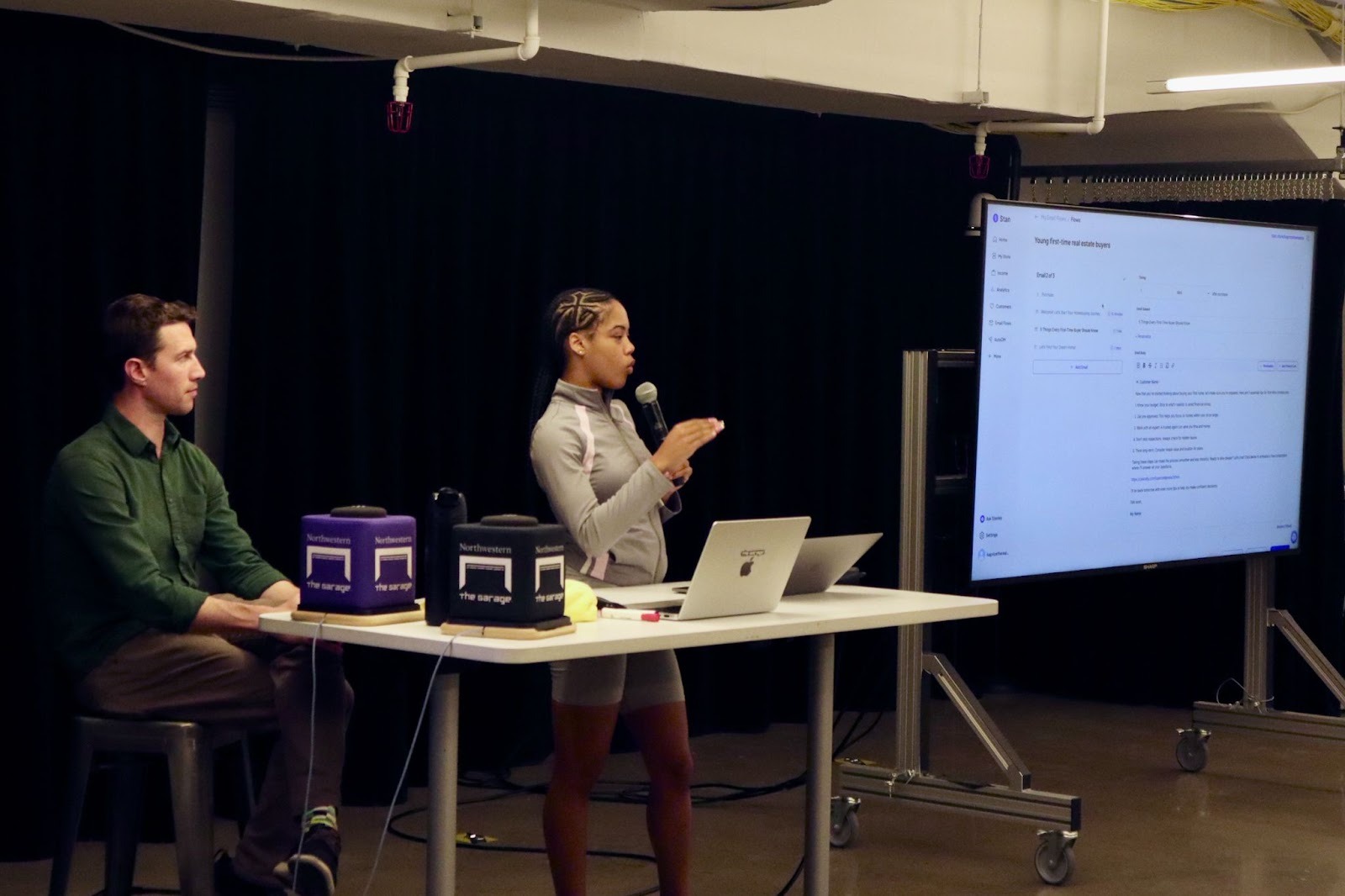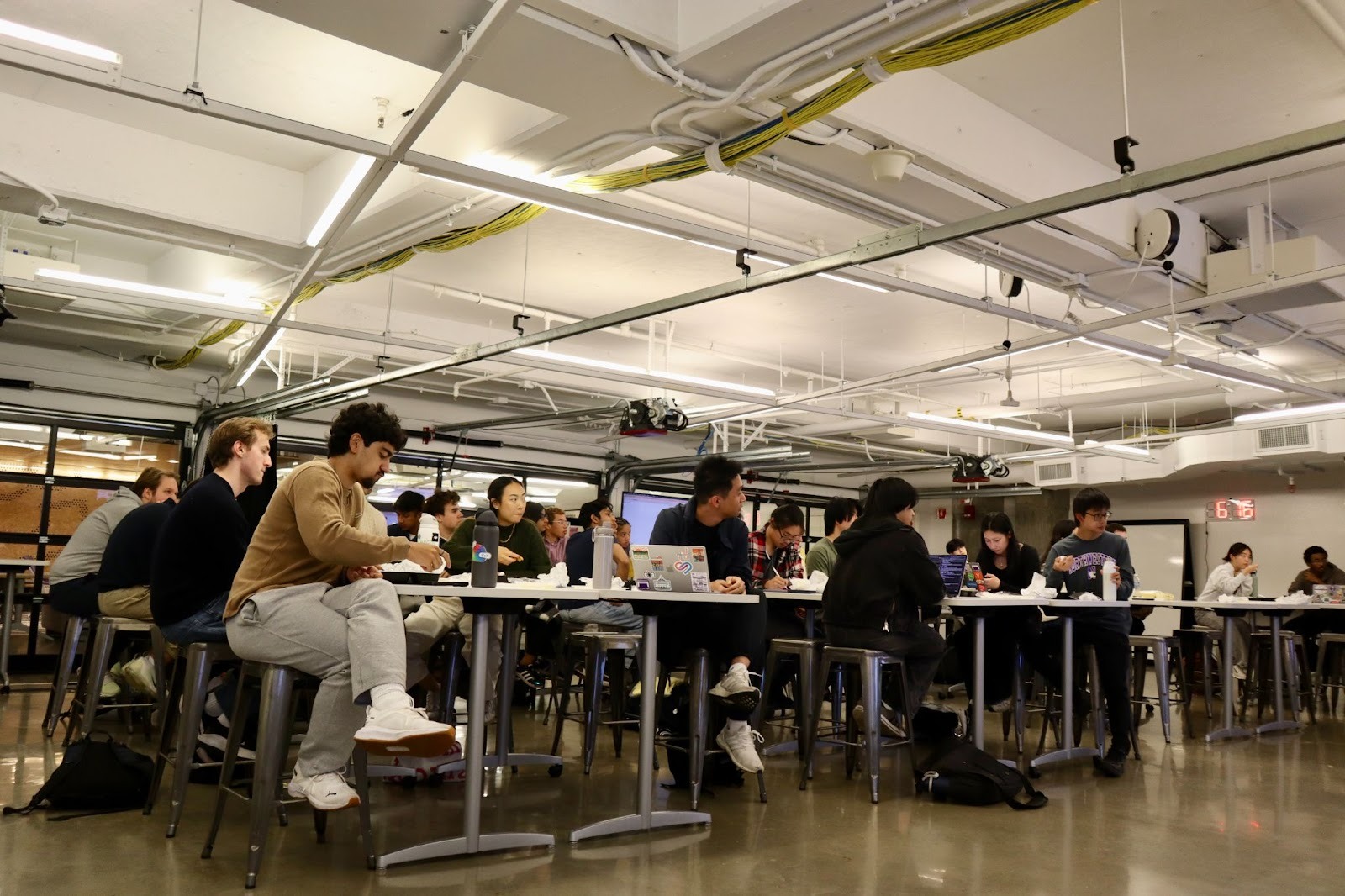Eighty-five percent of our startup founders use AI daily – but how?
At this week’s Family Dinner at The Garage, startup founders in the Residency Program gathered to share how they’re using AI to optimize workflows, sharpen their ideas, and expand their impact as builders. The conversation revealed a few patterns: A survey of Residents found that 85% of Residents use AI every day, mostly for research, brainstorming, and for 62%, coding. Every single person surveyed uses ChatGPT, while 44% also use Gemini.
And while most feel their usage matches their peers (61%), nearly a quarter said they’d call themselves AI experts.
Nearly everyone in the room agreed that AI has become a daily companion, but each founder uses it a little differently. Below are four ways Residents said they use AI and the tools they recommend for getting started.
For many founders, the hardest part of using AI isn’t getting ideas, but rather, getting them out fast enough. Kellogg student Samarth Makhija, Co-founder and CEO of AI writing feedback platform Quarkle, explained that the real bottleneck is typing out detailed prompts to AI, which takes at least 3 times longer than speaking.
His fix: Wispr Flow, a speech-to-text app that automatically formats or deletes phrases as he talks, adding formatting and proper grammar automatically.
“What’s good about Flow is if I say something such as, ‘Hmm. Write this thing. Actually, cancel that.’ Flow will delete all of the previous text of what I said,” Makhija said. “The founder is an absolute genius.”
Makhija treats AI as an extension of himself rather than a replacement. Where schoolwork is concerned, Makhija also recommended using Google’s NotebookLM to turn long readings into podcast-style summaries he can listen to while walking to class.
“You want to be thinking of AI as your own personal team of interns,” he added, “rather than someone who is doing the whole job for you.
With platforms like OpenAI’s Sora becoming more publicly available, AI-generated videos are increasingly popular. Yet Northwestern senior Angel Mendoza realized that adding a personal touch makes all the difference between whether someone scrolls in boredom or watches his video in full.
Mendoza used AI platform InVideo to produce a marketing video for Onsight, his AI-powered sensor and analytics startup that tracks the occupancy rate of gym equipment. After prompting the tool with his script, Mendoza replaced the AI-generated voiceover with his own voice.
“Something I never wanted to do was edit the video myself. But I knew if I just put some AI-generated video online, people were going to swipe off it. So I tried to do a little mix of both,” Mendoza said.
The hybrid video was ready to post in under an hour.
Meanwhile, Northwestern student Kaprice Daniels, who is also a licensed real estate agent, similarly automates her marketing but behind-the-scenes.
Using a message automation platform called Manychat, she sets up automatic DMs for anyone who comments a keyword on the Instagram posts of her realty account. Connected to her Stan Store, an all-in-one platform that allows creators to sell services directly through a single link in their social media bios, these messages trigger automated follow-ups, applications, and emails over several days.

This creates a personalized experience without the extra effort.
“If you don’t have time to do marketing yourself but you still want data intake, this would be a good platform to use,” Daniels recommended.
Several Residents shared how AI helps them test ideas before investing too much time or code. Founders Trevor Abbott and Victoria Israel of HaptE, an optical tech startup using cameras and computer vision to track items in warehouses, use a tool known as Roboflow fit with pre-trained computer vision models to build quick prototypes.
“If you’re creating software or even hardware, try seeing how GPT would use it and create it before you actually build it out,” Israel said. “That’s what we did. We validated the idea, actually tested it out, and once we got the client interested, then we started building.”
Not all innovation starts with creation. For Northwestern senior Terry Chen, founder of Crowdlisten, AI’s biggest value lies in understanding audiences. His platform collects and analyzes feedback from Reddit, TikTok, and other online communities to uncover what users love and struggle with across products and competitors.
During his time as an intern at Microsoft, Terry used the same process to analyze user feedback on the Sentinel cybersecurity product. By clustering data from forums and social channels, his system identified recurring themes.
“As you can see here, there’s a lot of positive feedback on Microsoft Sentinel, but at the same time, users also expressed concerns about the difficulty of cost estimation for consumption based pricing, so there’s a lot of potential in improving cost management related features,” Chen explained. “This is all from a neuro-semantic web search and clustering algorithm that looks at all the retrieved data, forms opinion clusters, and synthesizes it into key takeaways.”
Tools like CrowdListen can visualize this feedback, showing not only sentiment but also detailed key takeaways and traceable insights.

Whether they’re building gym tech, expanding a realtor business, or analyzing user sentiment, Residents at The Garage are finding that AI works best when it acts as a creative multiplier, not a substitute.
As Makhija from Quarkle put it, imagine you as a founder are an octopus juggling at least eight tasks: “AI can take one of those limbs that the octopus is controlling. Outsource that to the AI.”
Who knows? You might find that your new favorite co-worker lives in your browser tab.